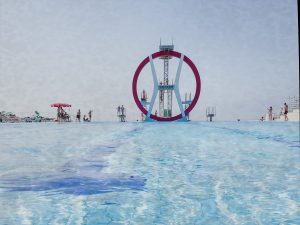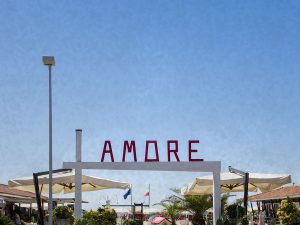
Curated by Clelia Belgrado
Opening: Friday October 27th, 2017
October 30th – November 17th
Officine Fotografiche Roma
Via G. Libetta 1 – 001154 Roma – tel. +39 06 97274721
Monday to Friday 10 am- 1.30 pm / 3 pm – 7 pm
[…] A photograph – confirms Cattani – can reveal things that, until such time as we look at it, had remained hidden, concealed in the apparent ordinariness of the real, and that only the devilish device enclosed in the camera (through the choice of a certain shot, inside a certain light) can grasp. Of course, before us the one who has taken it has seen it, sometimes anticipated, as did the great photographers, its final outcome, or at least intuited, even if only in the printing process where often the mysteries are understood – as does that paradoxical symbol of these revealing virtues of photography, Thomas (David Hemmings), the protagonist of Blow-Up by Michelangelo Antonioni, when he takes his pictures in the park and then develops them and even gets a glimpse of an assassination attempt-.
What unites all of Cattani’s images is this Epiphany, this miracle of an unexpected encounter, a recovered memory. The term of “Memorie” (memories), with which Bruno continues to characterise his collection of images, thus takes on a double declination, moreover inherent in a word so full of charm and meanings: the photographer, in the journey of his life, encounters situations that trigger and resurface in him certain buried awarenesses long remained silent, like the senses that are unsolicited by use; to look at these images is to find oneself lost in memories and feelings, in an association of the senses that otherwise would never surface from one’s mind. How amazing is the ability of photography to stir the imagination, to trigger a rêverie, a fantasy, maybe sometimes memories of dreams and ghosts, where experiences of reality, readings of novels, films can combine. One may well recognize, thanks to our sentimental education, something that, although unknown and despite never having been part of our visual experience in our lifetime, appears to us as familiar. With photographs like these by Bruno Cattani we can grasp the profound truth of another citation by Charles Simic: “Can one experience nostalgia for a time and place one did not know? In my opinion yes”
If in the early works everything seemed coated in a colour a little grey and gloomy and light declined towards the dark or when compact clouds prevent the sun’s rays from piercing that veil that shields the blue sky, now the world we now sometimes appears more clear, although there is always something whitish and hazy – a kind of snowy glow, as if the whole view was hovered by faint whitish flakes – reminding us of the distance from a place and a time, which can never be the same as that we are now immersed in watching. Arikha noted that style is “a frequency” to”the artist as the tone of voice is to a man” (5):

Cattani has now mastered his own peculiar style, making it instantly recognizable; Bruno’s voice has perhaps become in the years quieter and subdued, but even more full of feelings and nuances. In his images he now “follows his heart” as mentioned by Blaise Pascal (“The heart has its reasons which reason knows nothing of” (6)), certainly not to be understood as sentimentality good for all seasons and occasions, but as thought, poetic intuition of the mind that chooses to see the real through the joint filter of the heart and of the reason: his images are the result of a worldview and perception of the eye that knows how to select certain places. Style and tone permeate and unify everything in these images, engaging us in sensations that go far beyond the pleasure of the eye, to become reflections on the value and meaning of existence, captured furthermore by these inextricable visions of the familiar and the magic. I think that Cattani’s photographs, are the confirmation of the profound truth that Glenn Gould intuited: “The purpose of art is not the release of a momentary ejection of adrenaline but rather the gradual, lifelong construction of a state of wonder and serenity.” […]
An extract from the essay by Sandro Parmiggiani, April 2017 – written for the book “Frammenti” Corsiero Editions accompanying the exhibition.

